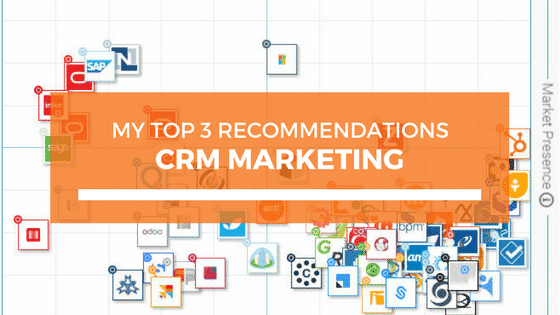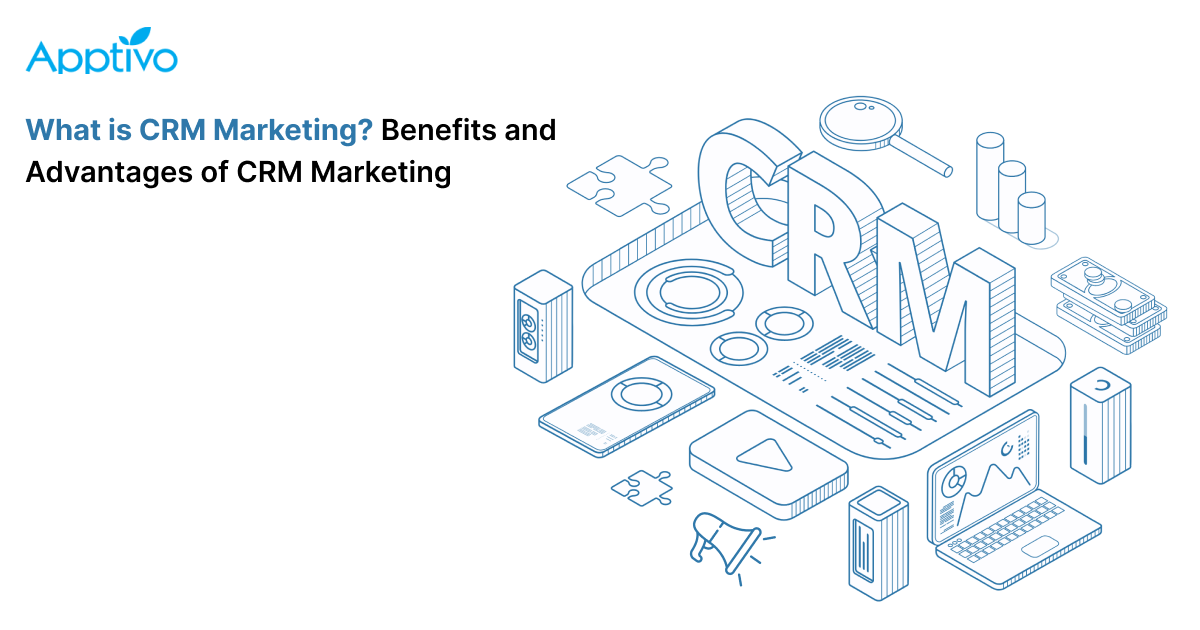
In today’s dynamic business landscape, achieving sustainable growth requires a strategic approach that combines the power of Customer Relationship Management (CRM) with the art of Content Marketing. This article delves into the compelling synergy between CRM marketing and content marketing, exploring how businesses can leverage this potent combination to cultivate stronger customer relationships, boost brand awareness, and drive significant revenue growth. We’ll unpack the core concepts, examine practical strategies, and provide actionable insights to help you harness the full potential of this powerful duo.
Understanding the Fundamentals: CRM Marketing and Content Marketing
What is CRM Marketing?
Customer Relationship Management (CRM) marketing focuses on building and nurturing relationships with customers throughout their lifecycle. It’s about understanding their needs, preferences, and behaviors to deliver personalized experiences that foster loyalty and drive repeat business. CRM marketing utilizes data and technology to manage interactions, track customer journeys, and optimize marketing efforts for maximum impact. At its core, CRM marketing aims to convert leads into customers, retain existing customers, and ultimately, increase profitability.
Key components of CRM marketing include:
- Customer Segmentation: Dividing your customer base into distinct groups based on demographics, behaviors, and preferences.
- Personalization: Tailoring marketing messages and offers to resonate with individual customer needs.
- Automation: Streamlining marketing processes through automated email campaigns, workflows, and lead nurturing sequences.
- Data Analysis: Analyzing customer data to gain insights into their behavior, preferences, and buying patterns.
- Customer Service Integration: Providing exceptional customer service to enhance satisfaction and build loyalty.
What is Content Marketing?
Content marketing is a strategic marketing approach focused on creating and distributing valuable, relevant, and consistent content to attract and retain a clearly defined audience – and, ultimately, to drive profitable customer action. It’s about providing your target audience with information that educates, entertains, or inspires them, establishing your brand as a trusted authority in your industry. Content marketing encompasses a wide array of formats, including blog posts, articles, videos, infographics, ebooks, and social media updates.
Key elements of content marketing include:
- Audience Research: Understanding your target audience’s needs, interests, and pain points.
- Content Planning: Developing a content strategy that aligns with your business goals and audience interests.
- Content Creation: Producing high-quality, engaging content that provides value to your audience.
- Content Distribution: Promoting your content across various channels to reach your target audience.
- Performance Measurement: Tracking key metrics to assess the effectiveness of your content marketing efforts.
The Powerful Synergy: How CRM Marketing and Content Marketing Work Together
The magic happens when CRM marketing and content marketing are integrated seamlessly. By combining the data-driven insights of CRM with the engaging power of content, businesses can create hyper-personalized experiences that resonate deeply with their target audience. This powerful synergy allows you to:
- Enhance Customer Segmentation: CRM data provides valuable insights into customer demographics, behaviors, and preferences. This information can be used to refine your content marketing efforts, ensuring that you’re creating content that’s highly relevant to specific customer segments. For instance, a CRM system might reveal that a particular segment of customers is highly engaged with video content. You can then tailor your content strategy to prioritize video creation for that segment.
- Personalize Content Delivery: CRM systems enable you to personalize the delivery of your content based on individual customer profiles. This means you can send targeted email campaigns, display customized website content, and serve personalized ads that resonate with each customer’s unique needs and interests. Imagine sending a customer an email featuring a blog post about a product they recently viewed on your website. This level of personalization significantly increases the likelihood of engagement and conversion.
- Improve Lead Nurturing: CRM systems allow you to automate lead nurturing sequences, delivering relevant content to leads at each stage of the sales funnel. By tracking lead behavior and interactions, you can tailor your content to address their specific pain points and guide them toward a purchase. For example, if a lead downloads an ebook about your product, you can automatically send them a series of emails with case studies, testimonials, and special offers.
- Optimize Customer Journey: By analyzing customer data within your CRM, you can identify areas where the customer journey can be improved. This might involve creating new content to address common pain points, streamlining the checkout process, or providing better customer support. For example, if your CRM data reveals that many customers abandon their shopping carts, you can create a targeted email campaign with a special offer to encourage them to complete their purchase.
- Measure ROI More Effectively: CRM systems provide valuable data for tracking the return on investment (ROI) of your content marketing efforts. By connecting your content marketing campaigns to your CRM, you can see how content drives leads, conversions, and revenue. This data allows you to make data-driven decisions about your content strategy and optimize your campaigns for maximum impact.
Strategies for Integrating CRM Marketing and Content Marketing
Successfully integrating CRM marketing and content marketing requires a strategic approach and the right tools. Here are some key strategies to consider:
1. Define Your Goals and Objectives
Before you start integrating CRM and content marketing, clearly define your goals and objectives. What do you want to achieve? Are you aiming to generate more leads, increase conversions, improve customer retention, or boost brand awareness? Your goals will guide your strategy and help you measure your success.
2. Understand Your Audience
Thoroughly understand your target audience. Create detailed customer personas that outline their demographics, behaviors, interests, and pain points. Use your CRM data to gain insights into your customers and tailor your content to their specific needs and preferences. This is critical for both CRM and content marketing success.
3. Choose the Right CRM and Content Marketing Tools
Select CRM and content marketing tools that integrate seamlessly and meet your business needs. Consider platforms like HubSpot, Salesforce, Marketo, and Pardot. These tools offer robust features for CRM, content creation, marketing automation, and analytics. Make sure your chosen tools can track and analyze key metrics, enabling you to measure the effectiveness of your campaigns and make data-driven decisions.
4. Segment Your Audience
Use your CRM data to segment your audience into distinct groups based on demographics, behaviors, and preferences. This allows you to create targeted content that resonates with each segment. For example, you might segment your audience by industry, job title, or purchase history.
5. Personalize Your Content
Personalize your content based on individual customer profiles. Use your CRM data to tailor your website content, email campaigns, and other marketing materials to each customer’s unique needs and interests. This will make your content more relevant and engaging, increasing the likelihood of conversion.
6. Create a Content Calendar
Develop a content calendar to plan and schedule your content marketing efforts. This will help you stay organized, ensure consistency, and align your content with your CRM marketing initiatives. Your content calendar should include topics, formats, publication dates, and promotional channels.
7. Promote Your Content Across Multiple Channels
Distribute your content across multiple channels, including your website, blog, social media, email, and paid advertising. Use your CRM data to identify the channels where your target audience is most active and tailor your content distribution strategy accordingly. Don’t be afraid to experiment with different channels to see what resonates best with your audience.
8. Automate Your Marketing Efforts
Use marketing automation tools to streamline your CRM and content marketing processes. Automate email campaigns, lead nurturing sequences, and social media posting. This will save you time and effort, allowing you to focus on creating high-quality content and building relationships with your customers.
9. Track and Analyze Your Results
Track and analyze your results to measure the effectiveness of your CRM and content marketing efforts. Use your CRM and content marketing tools to track key metrics, such as website traffic, lead generation, conversion rates, and customer retention. Use this data to optimize your campaigns and make data-driven decisions.
10. Continuously Optimize
The world of marketing is constantly evolving, so it’s essential to continuously optimize your CRM and content marketing strategies. Regularly review your results, analyze your data, and make adjustments to your campaigns as needed. Stay informed about the latest trends and best practices to ensure that you’re staying ahead of the curve.
Examples of Successful CRM and Content Marketing Integration
Let’s look at some real-world examples of how businesses are successfully integrating CRM and content marketing:
- Example 1: E-commerce Retailer: An e-commerce retailer uses its CRM system to track customer purchase history and browsing behavior. Based on this data, the retailer creates personalized email campaigns featuring product recommendations, special offers, and exclusive content relevant to each customer’s interests. This strategy drives repeat purchases and increases customer lifetime value.
- Example 2: SaaS Company: A SaaS company uses its CRM to track leads and their interactions with its website and content. The company then nurtures leads with targeted email sequences, providing valuable content such as webinars, ebooks, and case studies. This approach educates leads, builds trust, and guides them toward a purchase decision.
- Example 3: Financial Services Firm: A financial services firm uses its CRM to segment its audience based on financial goals and risk tolerance. The firm then creates tailored content, such as articles, videos, and infographics, that addresses the specific needs of each segment. This strategy builds credibility and positions the firm as a trusted advisor.
Tools and Technologies to Consider
The right tools can significantly streamline the integration of CRM and content marketing. Here are some popular options:
- CRM Platforms:
- HubSpot CRM: A comprehensive CRM platform with integrated marketing automation and content management features.
- Salesforce: A leading CRM platform with a wide range of features and integrations.
- Zoho CRM: A cost-effective CRM platform with a focus on sales and marketing automation.
- Content Marketing Platforms:
- WordPress: A popular content management system (CMS) for creating and managing blog posts and website content.
- Contentful: A headless CMS that allows you to manage content across multiple channels.
- Semrush: A suite of SEO and content marketing tools for keyword research, content optimization, and competitive analysis.
- Marketing Automation Platforms:
- Marketo: A powerful marketing automation platform for lead nurturing, email marketing, and campaign management.
- Pardot: A marketing automation platform specifically designed for B2B companies.
- ActiveCampaign: An affordable marketing automation platform with a focus on email marketing and CRM integration.
- Analytics Tools:
- Google Analytics: A free web analytics tool for tracking website traffic and user behavior.
- Google Data Studio: A data visualization tool for creating custom dashboards and reports.
Challenges and How to Overcome Them
While the synergy between CRM marketing and content marketing is powerful, there can be challenges in implementation. Here’s how to address some common hurdles:
- Data Silos:
One of the biggest challenges is integrating data from different sources. CRM data, website analytics, and content performance data can often reside in separate silos. To overcome this, choose CRM and content marketing tools that integrate seamlessly. Invest in data integration platforms if needed to consolidate your data into a single source of truth. Ensure there is a clear process for data sharing and access across teams.
- Lack of Alignment Between Sales and Marketing:
Sales and marketing teams sometimes have different goals and priorities. To address this, foster a culture of collaboration. Have regular meetings to align goals, share insights, and ensure that both teams are working towards the same objectives. Implement a Service Level Agreement (SLA) to define the responsibilities of each team.
- Difficulty Measuring ROI:
It can be challenging to track the ROI of content marketing efforts. Connect your content marketing campaigns to your CRM system to track leads, conversions, and revenue. Use analytics tools to monitor website traffic, engagement, and conversion rates. Focus on metrics like lead generation, customer acquisition cost, and customer lifetime value to demonstrate the impact of your efforts.
- Content Creation Bottlenecks:
Creating high-quality content can be time-consuming and resource-intensive. Develop a content calendar to plan your content in advance. Outsource content creation to freelancers or agencies if needed. Repurpose existing content into different formats (e.g., turning a blog post into a video). Prioritize content that aligns with your business goals and targets your most valuable customer segments.
- Choosing the Right Technology:
Selecting the right CRM and content marketing tools can be overwhelming. Research different platforms and compare their features and pricing. Consider your budget, business needs, and technical capabilities. Start with a few key features and gradually expand your technology stack as your needs evolve. Don’t be afraid to seek advice from consultants or experts.
The Future of CRM Marketing and Content Marketing
The convergence of CRM marketing and content marketing is set to become even more pronounced in the future. As technology advances, we can expect to see:
- Increased Personalization: Artificial intelligence (AI) and machine learning (ML) will play a bigger role in personalizing content and customer experiences.
- More Data-Driven Insights: Businesses will rely more heavily on data analytics to understand customer behavior and optimize their marketing efforts.
- Omnichannel Experiences: Customers will expect seamless experiences across all channels, including web, mobile, email, and social media.
- Focus on Customer Lifetime Value: Businesses will prioritize building long-term relationships with customers and maximizing their lifetime value.
- Integration of New Technologies: Emerging technologies like augmented reality (AR) and virtual reality (VR) will be integrated into content marketing and CRM strategies.
Conclusion: Embracing the Power of Synergy
The fusion of CRM marketing and content marketing represents a powerful synergy that can transform your business. By leveraging customer data to create engaging content and personalize experiences, you can cultivate stronger customer relationships, drive significant revenue growth, and build a loyal customer base. Embrace this powerful combination, and you’ll be well-positioned to thrive in today’s competitive marketplace. Remember to start by defining your goals, understanding your audience, and choosing the right tools. Then, continuously optimize your efforts, and you’ll be well on your way to achieving long-term success. The future of marketing is here, and it’s all about building meaningful connections with your customers through the strategic integration of CRM marketing and content marketing.


